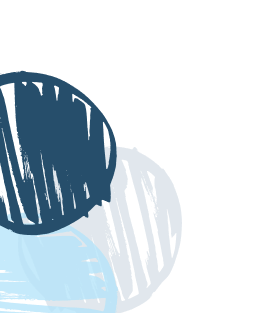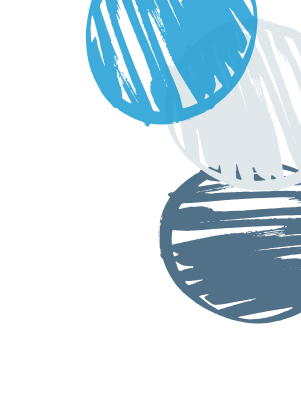

How Systems Work (What is a Computer?)

Click to Start Lesson
How Systems Work (What is a Computer?)
45min
Students will differentiate between inputs and outputs for computer-based systems and identify types of software used in different technologies.
Prerequisites
_Computer Science_: Students should have experience with using a computer.
Lesson Preparation
* There is a paper and digital version of the activity. Decide ahead of time how your students will interact with the activity. If they are using the paper version, create copies for each student. If they are using the digital version, make sure all students have access to the slides.
Lesson Plan
Lesson Slides
Lesson Standards
| Standard | Description |
|---|---|
| CA CS K-5: K-2.CS.2 | Explain the functions of common hardware and software components of computing systems. |
| CA CS K-5: K-2.CS.3 | Describe basic hardware and software problems using accurate terminology. |
| CSTA 1B: 1B-IC-18 | Discuss computing technologies that have changed the world, and express how those technologies influence, and are influenced by, cultural practices. |
| FL CS 3-5: SC.35.CS-CS.4.1 | Identify the basic components of a computer (e.g., monitor, keyboard, mouse, controller, speakers). |
| FL CS 3-5: SC.35.CS-CS.4.2 | Describe the function and purpose of various input/output devices and peripherals (e.g., monitor, screen, keyboard, controller, speakers). |
| FL CS 3-5: SC.35.CS-CS.4.3 | Compare and contrast hardware and software. |
| GA CS 3-5: CSS.EL.3-5.1.1 | Describe how internal and external parts of computing devices function to form a system. |
| KY CS K-5: E-CS-02 | Identify and describe the function of common physical components of computing systems (hardware) using appropriate terminology. |
| NE K-5 Technology: NE.K5.12 | Demonstrate an understanding of the relationship between hardware and software. |
| NE K-5 Technology: NE.K5.14 | Identify major computer components. |
| NE K-5 Technology: NE.K5.15 | Describe the components and functions of computers and networks. |
| NE K-5 Technology: NE.K5.55 | Demonstrate and understanding of how information is represented, stored, and processed by a computer. |
| NJ CS 3-5: 8.1.5.CS.1 | Model how computing devices connect to other components to form a system. |
| NJ CS 3-5: 8.1.5.CS.2 | Model how computer software and hardware work together as a system to accomplish tasks. |
| NV CS K-5: 3.CS.D.1 | Describe how internal and external parts of computing devices function to form a system. |
| NV CS K-5: 3.IC.C.1 | Discuss computing technologies that have changed the world, and express how those technologies influence and are influenced by cultural practices. |
| NV CS K-5: 4.CS.HS.1 | Model how computer hardware and software work together as a system to accomplish tasks. |
| NV CS K-5: 4.IC.C.1 | Compare and contrast how computing has changed society from the past to the present. |
| NY CS K-6: 2-3.IC.6 | Identify and discuss factors that make a computing device or software application easier or more difficult to use. |
| NY CS K-6: 2-3.NSD.1 | Describe and demonstrate several ways a computer program can receive data and instructions (input) and can present results (output). |
| NY CS K-6: 2-3.NSD.2 | Explain the function of software in computing systems, using descriptive/precise language. |
| NY CS K-6: 4-6.DL.5 | Identify common features of digital technologies. |
| OK CS 3-5: 3.DA.S.01 | Recognize that different types of information are stored in different formats that have associated programs (i.e., documents open in a word processor) and varied storage requirements. |
| OK CS 3-5: 3.IC.C.01 | Identify computing technologies that have changed the world, and express how those technologies influence, and are influenced by, cultural practices. |
| OK CS 3-5: 4.IC.C.01 | Give examples of computing technologies that have changed the world, and express how those technologies influence, and are influenced by, cultural practices. |
| OK CS 3-5: 5.IC.C.01 | Give examples and explain how computing technologies have changed the world, and express how computing technologies influence, and are influenced by, cultural practices. |
| RI CS K-5: 1B-CSN-H-1 | Describe how people interact with the various parts of computing systems to accomplish tasks. |
| TN CS K-5: K.CCP.1 | Identify, using appropriate terminology, common physical components of computing systems (hardware). For example, but not limited to, desktop computers, laptop computers, tablet devices, monitors, keyboards, mice and printers. |
| TN CS K-5: 1.CCP.1 | Recognize and utilize common physical components of computing systems (hardware) and software concepts using correct terminology. For example, but not limited to, laptop computers, tablets, monitors, keyboards, printers; software concepts such as sign-in requirements, input, output, debug, and program. |
| TN CS K-5: 2.CCP.1 | Identify and describe how hardware and software components make up a computing system. |
| TN CS K-5: 3.CCP.1 | Recognize and understand that a series of devices and components form a system of interdependent parts with a common purpose. |
| TN CS K-5: 4.CCP.1 | Recognize the input and output devices along with the components that form an interdependent system with a common purpose. |
| TN CS K-5: 5.CCP.1 | Identify and describe the role of various input and output devices and components that are within an interdependent system with a common purpose. |
| UT CS K-5: 3.CS.1 | Describe and model how computing devices connect to other components to extend their capabilities and form a system. |
| UT CS K-5: 4.CS.1 | Demonstrate how computer hardware and software work together as a system to accomplish tasks. |
| WI CS 3-5: IC1.a.2.i | Discuss computing technologies that have changed the world and express how those technologies influence, and are influenced by, cultural practices. |
| WI CS 3-5: IC1.a.3.i | Generate examples of how computing can affect society, and also how societal values can shape computing choices. |
| WI CS K-2: CS1.a.1.e | Identify and use software that controls computational devices to accomplish a task (e.g., use an app to draw on the screen, use software to write a story or control robots). |
| WI CS K-2: CS1.a.2.e | Use appropriate terminology in naming and describing the function of common computing devices and components (e.g., desktop computer, laptop computer, tablet device, monitor, keyboard, mouse, printer). |
| WI CS K-2: CS1.b.1.e | Identify the components of a computer system and what the basic functions are (e.g., hard drive, and memory) as well as external features and their uses (e.g., printers, scanners, external hard drives, and cloud storage). |
| WI CS K-2: CS2.a.1.e | Identify, using accurate terminology, simple hardware and software problems that may occur during use (e.g., app or program not working as expected, no sound, device won't turn on). |
| WY CS K-2: 2.CS.HS.01 | Demonstrate and describe the function of common components of computing systems (hardware and software) (e.g., use a browser, search engine). |